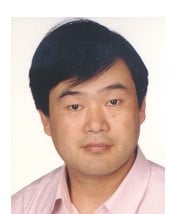Feature Papers in Smart and Functional Polymers
A special issue of Polymers (ISSN 2073-4360). This special issue belongs to the section "Smart and Functional Polymers".
Deadline for manuscript submissions: closed (10 March 2024) | Viewed by 4647
Special Issue Editors
Interests: microphase separation and self-assembly in multicomponent polymer systems; synthesis and characterization of polyhedral oligomeric silsesquioxane (POSS) monomers and POSS-containing polymers; shape memory, self-healing, and reprocessing properties of polymers; dynamics of polymers in bulk by solid NMR spectroscopy (1H, 13C, 29Si, 15N and 2H NMR)
Special Issues, Collections and Topics in MDPI journals
Interests: polymer processing technology; polymer composites; flow-induced crystallization; oil/water separation materials; polymer blend
Special Issues, Collections and Topics in MDPI journals
Interests: medical materials; drug carrier; photoelectric materials; ordered nanomaterial assembly
Special Issues, Collections and Topics in MDPI journals
Special Issue Information
Dear Colleagues,
This Topic Collection focuses on recent advances in smart and functional polymers. Smart polymers are synthetic polymers designed to mimic biopolymers with biological intelligence. This class of polymers can exhibit special functions in response to external conditions, which are similar to the biological intelligence observed in nature. Smart polymers have many important applications. Functional polymers are macromolecules with unique features and applications. Depending on their functional groups, macromolecular architectures and supramolecular structures, functional polymers find a variety of applications such as separation, electronic conductance, photo- and electro-luminescence, energy storage and conversion, tissue engineering, and control release. Smart and functional polymers are a fast-growing field in polymer science. In recent years, there have been many new and fascinating results in research in this field, and it is believed that this topic of research will become increasingly attractive. This Special Issue aims to reflect the advances in this field.
This Topic Collection covers all the fields related to smart and functional polymers, but special attention will be given to the following aspects:
- Shape memory;
- Self-healing;
- Hydrogels;
- Tissue engineering;
- Stimuli-responsive polymer;
- Soft robotics
- Actuators;
- Controlled release;
- Polymer membrane;
- Polyelectrolyte;
- Photoluminescence;
- Electroluminescence;
- Photo-electric conversion;
- Data record and storage;
- Energy storage and conversion;
- Tissue engineering;
- Control release.
Prof. Dr. Sixun Zheng
Prof. Dr. Xianhu Liu
Prof. Dr. Guang Yang
Guest Editors
Manuscript Submission Information
Manuscripts should be submitted online at www.mdpi.com by registering and logging in to this website. Once you are registered, click here to go to the submission form. Manuscripts can be submitted until the deadline. All submissions that pass pre-check are peer-reviewed. Accepted papers will be published continuously in the journal (as soon as accepted) and will be listed together on the special issue website. Research articles, review articles as well as short communications are invited. For planned papers, a title and short abstract (about 100 words) can be sent to the Editorial Office for announcement on this website.
Submitted manuscripts should not have been published previously, nor be under consideration for publication elsewhere (except conference proceedings papers). All manuscripts are thoroughly refereed through a single-blind peer-review process. A guide for authors and other relevant information for submission of manuscripts is available on the Instructions for Authors page. Polymers is an international peer-reviewed open access semimonthly journal published by MDPI.
Please visit the Instructions for Authors page before submitting a manuscript. The Article Processing Charge (APC) for publication in this open access journal is 2700 CHF (Swiss Francs). Submitted papers should be well formatted and use good English. Authors may use MDPI's English editing service prior to publication or during author revisions.
Keywords
- shape memory
- self-healing
- hydrogels
- stimuli-responsive polymer
- energy storage and conversion
- polyelectrolyte








